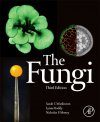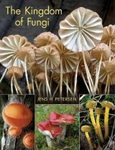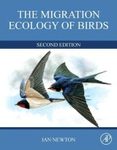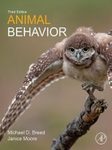By: Sarah C Watkinson(Author), Lynne Boddy(Author), Nicholas P Money(Author)
474 pages, 25 plates with colour photos and colour illustrations; b/w photos, b/w illustrations, tables
![The Fungi The Fungi]()
Click to have a closer look
About this book
Contents
Customer reviews
Related titles
About this book
The Fungi, Third Edition, offers a comprehensive and thoroughly integrated treatment of the biology of the fungi. This modern synthesis highlights the scientific foundations that continue to inform mycologists today, as well as recent breakthroughs and the formidable challenges in current research. The Fungi combines a wide scope with the depth of inquiry and clarity offered by three leading fungal biologists. The Fungi describes the astonishing diversity of the fungi, their complex life cycles, and intriguing mechanisms of spore release. The distinctive cell biology of the fungi is linked to their development as well as their metabolism and physiology. One of the great advances in mycology in recent decades is the recognition of the vital importance of fungi in the natural environment. Plants are supported by mycorrhizal symbioses with fungi, are attacked by other fungi that cause plant diseases, and are the major decomposers of their dead tissues. Fungi also engage in supportive and harmful interactions with animals, including humans. They are major players in global nutrient cycles.
The Fungi is written for undergraduates and graduate students, and will also be useful for professional biologists interested in familiarizing themselves with specific topics in fungal biology.
Contents
Preface
Acknowledgements
Note on Taxonomy
Chapter 1: Fungal Diversity
Abstract
Evolutionary Origins of the Fungi and Their Relationships to Other Eukaryotes
The Classification of Fungi
Fungal Phyla
Microsporidia
Miscellaneous Microorganisms Studied by Mycologists
Chapter 2: Fungal Cell Biology and Development
Abstract
Organelles, Cells, Organs
Cell Structure
Growth and Cell Division
The Mycelium
Multicellular Organs
Chapter 3: Spore Production, Discharge, and Dispersal
Abstract
Diversity, Development, and Functions of Spores
Spore Size and Shape
Spore Discharge
Dispersal of Spores and Aeromycology
Dispersal of Spores by Animals
Aquatic Spores
Chapter 4: Genetics - Variation, Sexuality, and Evolution
Abstract
Defining Individuals, Populations, and Species
Life Cycles and the Sexual Process
Variation, Microevolution, and Speciation
Chapter 5: Physiology and Adaptation
Abstract
Introduction
Nutrient Acquisition, Uptake, and Assimilation
Secondary Metabolism
Sensing and Responding to the Environment
Developmental Adaptation for Nutrient Acquisition
Geomycology
Chapter 6: Molecular Ecology
Abstract
The Application of DNA Technology in the Ecology of Fungi
Fungal Diversity in the Environment
Linking Fungal Diversity and Ecosystem Processes
Whole-Genome Sequencing and Comparative Genomics
Chapter 7: Mutualistic Symbiosis Between Fungi and Autotrophs
Abstract
Mycorrhiza
Lichens
Endophytes
Chapter 8: Pathogens of Autotrophs
Abstract
Spectrum of Interactions of Fungi with Plants
Distribution of Pathogens Amongst Fungal Groups
Susceptibility to and Defence Against Fungal Pathogens
Key Events in the Disease Cycle of Pathogens
Case Studies
Development of Disease in Natural Ecosystems and Crops
Diseases of Other Autotrophs: Lichens and Seaweeds
Emerging Diseases and the Biosecurity Threat
Chapter 9: Interactions with Humans and Other Animals
Abstract
Fungi and Humans: Medical Mycology
Pathogens of Other Vertebrates
Killers of Invertebrates
Fungi as Food and Habitat for Animals
Mutualistic Associations Between Fungi and Animals
Chapter 10: Interactions Between Fungi and Other Microbes
Abstract
Fungal-Fungal Interactions
Interactions Between Fungi and Bacteria
Viruses of Fungi
Interactions Between Fungi and Protists
Chapter 11: Fungi, Ecosystems, and Global Change
Abstract
Introduction
The Roles of Fungi in Element Cycles, Bioconversions, and Energy Flows
Biodiversity and Biogeography of Fungi
Climate Change Responses of Fungi
Land Use Change
Pollution, Pesticides, Fertilisers, Nutrient Distribution, and Recycling
Movement of Biota
Fungal Conservation
Chapter 12: Fungi and Biotechnology
Abstract
The Industrial Significance of Fungi
The Cultivation of Mushrooms for Food and Pharmaceuticals
Production of Food and Drink Using Yeasts and Filamentous Fungi
Fermentation Technology
Genetic Manipulation of Fungi for Biotechnology
Modern Biotechnological Applications of Filamentous Fungi and Yeasts
Appendix: Glossary of Common Mycological (and Related) Terms
Index
Customer Reviews
By: Sarah C Watkinson(Author), Lynne Boddy(Author), Nicholas P Money(Author)
474 pages, 25 plates with colour photos and colour illustrations; b/w photos, b/w illustrations, tables
Reviews of the previous editions:
"[...] start using this in your course if you are not already doing so-it is one of the best tools around [...]"
– The Brittish Mycology Society (July 2003)
"The style of The Fungi shows that the authors are all experienced teachers, with skills of how to present material in a readable and attractive way [...] In summary, start using this in your courses if you are not already doing so – it is one of the best two tools around at this time"
– David L. Hawksworth for Mycological Research (March 2003)
"[...] superior to some of the competitors published in recent years. It certainly deserves consideration by instructors teaching any undergraduate course concerned with the biological activities of fungi."
– Nicholas P. Money for ASM News (2002)
"[...] fills a gap between many textbooks of microbiology, biochemistry, genetics and ecology through covering topics specific to mycology that they often omit."
– Meriel Jones for Microbiology Today (May 2002)
"[...] an enjoyable way to survey the subject of modern mycology. We are fortunate to have this excellent textbook."
– Mycologia
"The text is beautifully written and an understanding and enthusiasm for this important group of organisms comes through on every page."
– Trends In Microbiology
" [...] a most readable and recommendable source of information for beginners, advanced students and professionals in mycology."
– Zeit für Pflanzenkrankheiten und Pflanzenschultz
"The coverage is extensive and informative. I am very pleased to recommend this book to those who want to know and understand fungi."
– Biodiversity and Conservation
" [...] the book can be highly recommended for teachers and researchers alike and the advanced forest pathology student will find it very useful."
– European Journal of Forest Pathology
"This will improve undergraduate learning and promote a more integrated understanding of fungal biology. I will certainly use it in my teaching and am sure many others will do likewise."
– New Phytologist


































